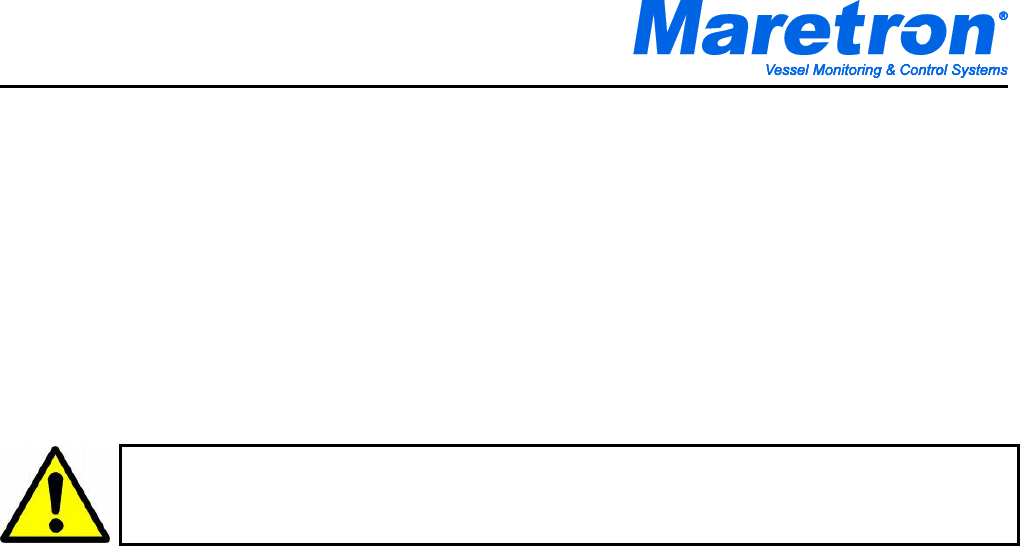
Copyright © 2011 Maretron, LLP All Rights Reserved P/N: M001804 Rev.1.2 1/11
Installation Instructions
BHW100 Bilge High Water Detector
Instructions
Please follow these instructions to connect the BHW100 to the NMEA 2000 network via a Maretron SIM100
Switch Indicator Module. The wiring diagram appears in Figure 1 on the reverse of this page. The diagram shows
a connection to channel #1, but connections to other channels are similar.
1. The BHW100 cable contains one blue and one brown wire. Connect the brown wire to a free switch
channel “A” terminal on the SIM100. The example in Figure 1 shows the detector connected to switch
channel 1 with the brown wire connected to “SW1A”.
2. Connect the blue wire to the corresponding “SWxB” terminal. The example in Figure 1 shows the detector
connected to switch channel 1 with the blue wire connected to “SW1B”.
NOTE: The brown wire from the BHW100 must be connected to the “A” terminal of the switch
channel and the blue wire must be connected to the “B” terminal of the switch channel. If these
wires are reversed, the detector will not operate properly.
3. Use a Maretron DSM250 display (firmware 1.3.5 or higher), the DSM250 viewing function of the Maretron
N2KAnalyzer software, or other Maretron display product capable of configuring the SIM100 to set the
switch channel mode (indicated as “Channel #x Mode” on the DSM250) to “End of Line Resistor”. For this
example, you would set “Channel #1 Mode” to “End of Line Resistor”.
4. With the BHW100 out of water, supply power to the NMEA 2000 network and verify that the switch
channel indicates the “off” (normal) state using Maretron N2KView software, N2KAnalyzer, or other
product capable of displaying switch indicator state.
5. Immerse the BHW100 in water and verify that the switch channel indicates an “on” (alarm) state during
the test.
6. Disconnect either the brown or blue alarm wire from the SIM100 and verify that the switch channel
indicates an “error” state.
7. Reconnect the wire after the test and verify that the switch channel indicates an “off” (normal) state.
8. Install the BHW100 to the side of the bilge so that the molded-in “target” on the side of the unit is visible,
and so that the center of the target is at the height of the water level at which you want the bilge water
alarm to occur.
(continued on reverse)
